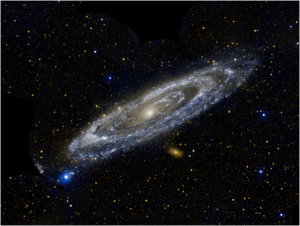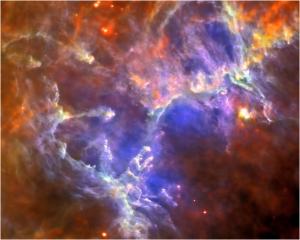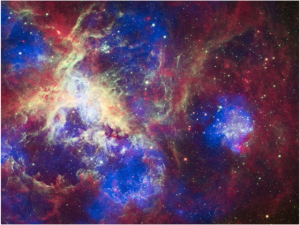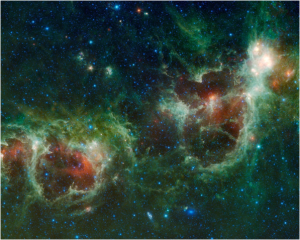Hawking, Time, and Theory of Relativity and Red Shift and Red Shift Gravity or Receding Direction
 PIA15416 spiral galaxy 3*10^6 light years M31 Andromeda
PIA15416 spiral galaxy 3*10^6 light years M31 Andromeda
32nd 6th 87th 93rd 189th page Theory of Relativity and Red Shift and Red Shift Gravity or Receding Direction.
These discussions commemorate the passing of Professor Stephen William Hawking, age 76, on ‘pi day’ 2018, late of Cambridge, England. They are extracts of a letter sent in 2003 to the Professor reviewing portions of his book, A Brief History of Time.
Connecticut
January, 2003
Stephen Hawking, Professor
c/o Centre for Mathematical Sciences
University of Cambridge
Wilberforce Road
Cambridge CB30WA England
<s.w.hawking@damtp.cam.ac.uk
A Brief History of Time, 1988 Bantam Books, Dell
Professor Hawking,
You observe (pg. 32) the concept that as mass increases, time decreases, as velocity increases; to wit, as velocity, (less than the speed of light), approaches the speed of light, mass also increases, and approaches, but does not achieve infinity. And, as the theory relates mass, distance, and time, as frequency decreases, energy decreases, but not speed. Therefore time is not independent, but is related to speed and distance. Hence the space time relationship. Time is predicted to slow near a massive body.
(speed = distance/time).
So as starlight is bent, as it travels near the gravitational attraction of the sun, the frequency should decrease (in order to maintain speed while traveling in a farther distance). So do stars change color, or red shift, for the light passing next to the sun, as the rays are so bent? Such bent light, because it is bent, is going farther than before, and requires more time, in order to maintain a constant light speed? More time is assumed to be similar to slow time. If energy decreases (i.e. gravitation reduces frequency), the conservation of energy implies the energy is conserved. Perhaps the energy is harvested somewhere else. Why not?
You observe (at page 189) the conservation of energy and mass. Could the energy is harvested by gravity? And, if light bends, to maintain the same speed and travel farther (around the bend) than when traveling straight, it must have more time to travel farther at the constant speed. We also know, “the elements are eternal, and spirit and element, inseparably connected, receive a fullness of joy.” D&C 93:33. If gravity does not harvest energy, it is a more amazing force than appreciated, in that gravity consumes, but is never consumed. If gravity harvests the light energy, it would recycle the light frequency energy, and then re-extend it into the Universe, by attracting mass.
6th 32nd 87th 93rd page RED SHIFT GRAVITY OR RECEDING DIRECTION
You observe (page 6) that light from stars and galaxies appears to be red shifted, that is, shifted to a lower frequency and lower energy level than that which would be otherwise predicted. Hubble’s discovery of the red shift, circa 1920’s, is a major basis to conclude that all observable galaxies are going away from each other. And, if something is going away, it is logical to assume that they, therefore, were previously closer. And if closer, possibly they were even in the same place, hence the big bang theory, which requires consideration for a big crunch.
But, is there another explanation for red shift? Doesn’t light also lose energy, due to effects of gravitation? You observe (p. 93) the ‘gravitation based’ red shift of light. As light energy is measured by frequency, based on the time and distance it travels, the frequency is also red shifted. And when time is measured in billions of earth years, and distance is measured in astronomical units[1] and light years[2], the shift would be observable. You observe that gravity pull, like the attraction of rocket propulsion, red shifts light. A gravity based red shift is just as consistent as the explanation thatgalaxies are receding away from one another in all directions.
You observe (page 32) that as light energy decreases, frequency[3] decreases. So could the red shift of galaxies be due to huge distances and the long time gravity pulls on the light, as light energy is maintaining between distant points, before it is observed on earth? If gravity from the earth slows light energy and frequency in measurable quantities, why would not the gravitational pull of the mass of whole galaxies, also red shift the light to a lower frequency? The possibility of a gravitational red shifted light would mean the galaxy would be moving in its assigned realm, or ‘measure of its creation,’ maybe because of a big bang or maybe because of something else. You observe (page 38) that gravity is ignored in measuring the light from galaxies. But the mass of stars and galaxies is many manymultiples greater than the sun, much less the earth’s mass, from which the earth’s gravitational effect on light is measurable.
You observe (page 87) that the light pulled by gravity into the mass concentrated in a black hole body “shifts redder and redder and fainter and fainter” until light cannot escape. Could this red shift be interpreted that the black hole body is far away (faint) and moving away (red shift)? As I understand your explanation of the black hole calculation theory, brightness indicates nearness, faintness indicates great distance, and red shift indicates direction and speed of the body emitting the light or signal.
My conclusion is that the red shift of light indicates a loss of frequency and energy. The loss of energy may be due to 1) an opposite directional speed of the light source, the Doppler effect[4], (i.e. Hubble’s observation[5], and the theory of the big bang), or 2) the gravitational attraction of galactic mass, or 3) some other methodology such as a filtering mechanism soaking up and conserving the higher energy light and permitting the continuation of lower energy light, by a means we have not considered.
Professor Hawking’s mother was Scottish. His grandfather was James Walker born Glasgow and son of Archibald Walker Jr. and Janet Audrey Margaret Morris. Archibald was the son of Archibald Walker Sr. and Isobel McIntyre Ewing. Janet was the daughter of William John Morris and Margaret McGregor.
Hawking’s mother’s mother was Elisabeth Agnes “Nancy” Stevenson Law, born Glasgow, and daughter of Andrew Law and Agnes Stevenson. Agnes was the daughter of Robert Stevenson who was married 6 August 1852 in Melrose, Roxburgh, Scotland to Isabella Hyslop.
Stephen William Hawking, born 8 January, 1942 in Oxford, Oxfordshire, England, U.K. Deceased: 14 March, 2018 ‘pi day, 3.14,’ in Cambridge, England, U.K.
Cosmic images
https://www.jpl.nasa.gov/spaceimages/wallpaper.php
[1] ASTRONOMICAL UNIT (AU) 1 AU = 149,597,870.700 kilometers (or 149,597,870,700 meters) Definition: An Astronomical Unit is the mean distance between the Earth and the Sun.
[2] a unit of astronomical distance equivalent to the distance that light travels in one year, which is 9.4607 × 1012 km (nearly 6 trillion miles)
[3] unit of frequency is the hertz (Hz), corresponding to one crest per second
[4] named after C. J. Doppler (1803-53), Austrian physicist. the shift in frequency (Doppler shift) of acoustic or electromagnetic radiation emitted by a source moving relative to an observer as perceived by the observer:
[5] A law of cosmology stating that the rate at which astronomical objects in the universe move apart from each other is proportional to their distance from each other. Current estimates of the value of this proportion, known as Hubble’s constant, put its value at approximately 71 kilometers per second per megaparsec.
Utah Standard News depends on the support of readers like you.
Good Journalism requires time, expertise, passion and money. We know you appreciate the coverage here. Please help us to continue as an alternative news website by becoming a subscriber or making a donation. To learn more about our subscription options or make a donation, click here.
To Advertise on UtahStandardNews.com, please contact us at: ed@utahstandardnews.com.





Comments - No Responses to “Hawking, Time, and Theory of Relativity and Red Shift and Red Shift Gravity or Receding Direction”
Sure is empty down here...